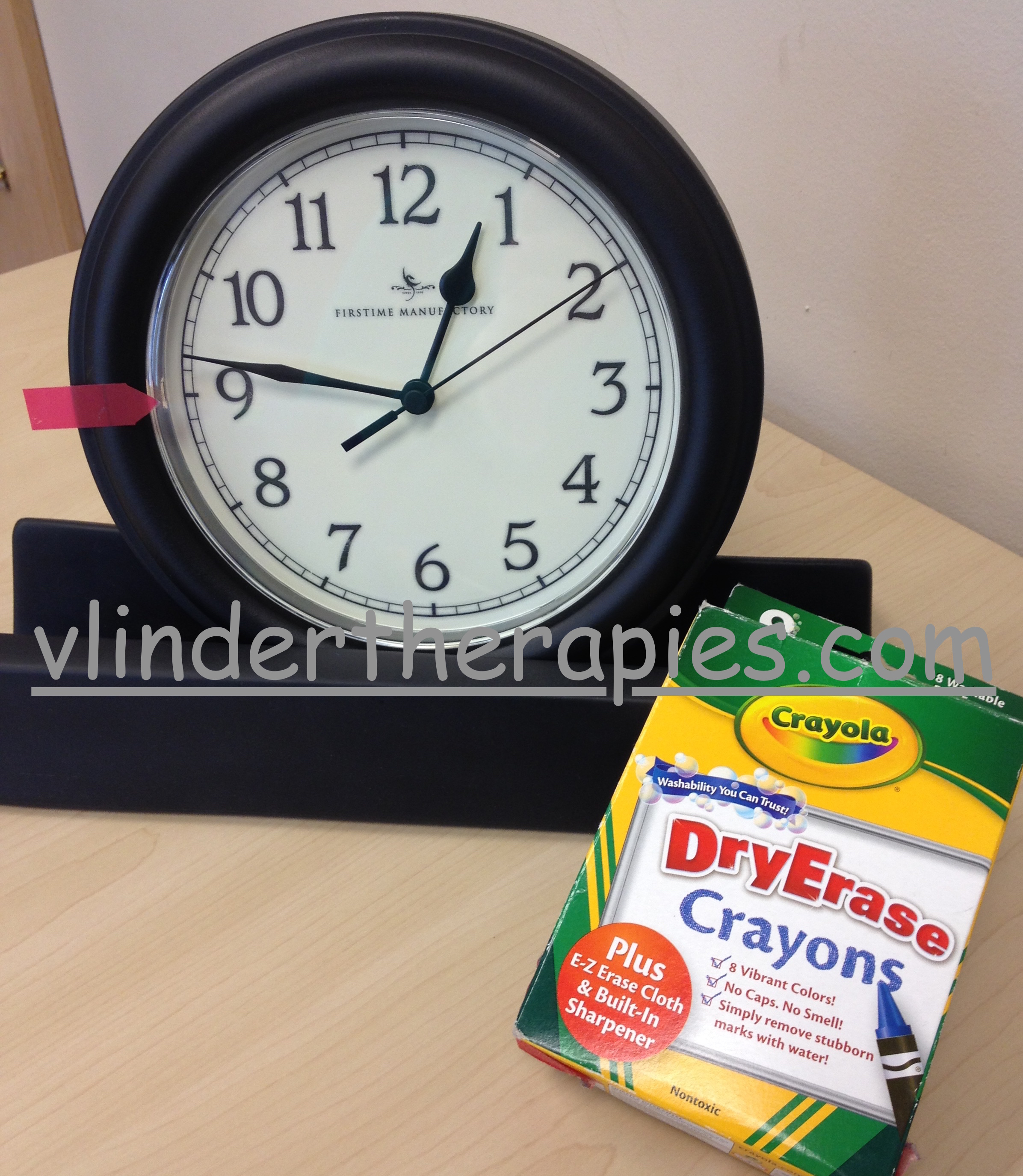Teaching the Passage of Time

Have you ever gotten "lost" in the depths of Pinterest for longer than you care to admit (only to look up at the clock and think "yikes! where did that 45 minutes go?!?")? Task (time) management, an important executive function skill, is all about understanding the passage of time. It is understanding that everything we do takes time; learning how to estimate how long a task or activity will take; recognizing that if I need to be to work for an important meeting in 30 minutes and my commute takes an average of 20-25 minutes then I probably shouldn't stop for coffee along the way.
I often use visual schedules in therapy with my clients. Sometimes it is simply a written list of the activities/tasks we are going to do. More often, it is a series of picture symbols on a velcro strip or iPad app. Many children benefit from a heads up about what we will be doing. Some can better tolerate our "work" tasks when they can see the activity they want to do is coming soon. Recently, one of my young clients became very resistant to using a visual schedule in therapy. We had been going through a period where he would have a meltdown early in our session and it would last until it was time to leave. We have been working on the self/emotional-regulation and communication issues, but in the meantime he had learned to NOT trust the visual schedule. Too many times he would meltdown early and proceed to cry and fight through the entire session and never get to an activity on the schedule he REALLY wanted to do. He had learned that just because his choice was put on the schedule did not guarantee he was going to get to do it, but hadn't realized that his actions (behavior) were linked to this in any way. He started melting down as soon as his choice wasn't first on the schedule (in his mind that meant we were never going to get to it...a self-fulfilling prophecy). He needed help understanding the passage of time that was happening while he was crying. He needed help understanding that our sessions had to end at a certain time. I needed a new strategy to use with him!
About that time I completed a course on executive function skills by Sarah Ward, MS, CCC-SLP (more about that here). She briefly touched on a strategy to help kids understand the "sweep of time". Brilliant!
Materials: analog clock (make sure it has regular numbers, not roman numerals), dry erase marker/crayon*
Process: draw on the face of the clock to show how much time is allotted to an activity/task (I also painted the clock hands so that we can talk about "when the blue gets to the 6", etc.)
So simple, and yet...so brilliant! Here is how I modified her idea to fit my little guy's needs. With my kiddo, we start each session by drawing our schedule on the clock, including lines to delineate how long we will spend on each task. We also mark the time our session will end. Initially, he would fuss and resist through the entire time allotted for an activity. To help him understand the time being "wasted" and that we still needed to do that activity, I would erase the subsequent activities and redraw the lines - adding time to the current task and taking time away from the final activity (his choice). It only took a couple of sessions for him to start to understand that he was in control of how much time we would have for his choice (or even whether we had time for his choice at all).
How does this differ from using visual timers (such as the TimeTimer)? There certainly are situations when a timer fits the need. However, for my little guy it wasn't so much about the amount of time dedicated to the first task on the schedule. It was that he needed to understand how the time spent on that first task related to the time left for his desired activity. A timer does not show relative time. Nor does it show fixed time elements. My client also needed to understand that our ending time is fixed and once reached it is time to leave, regardless of whether or not he had time for a balloon animal.
There are many variations to how you could use this strategy to help a child learn to "sense, see, and feel time". How about you - do you have an idea of how you can use this strategy?
*Note: if you are using a clock with a plastic face cover, beware that dry erase markers will start to stain the plastic (which is why I use dry erase crayons - they do not have the same issue of staining); dry erase markers work fine on clocks with glass covers
 Saturday, April 4, 2015 at 9:33PM
Saturday, April 4, 2015 at 9:33PM  Post a Comment →
Post a Comment →  behavior,
behavior,  executive function,
executive function,  time | in
time | in  Language
Language
Reader Comments